
Phew - he's in...
After three attempts at trying, Alex Thomson aboard his trusty Farr-designed Hugo Boss, has not only finally managed to finish a Vendee Globe, but has done so in style. His silver IMOCA 60 arrived in Les Sables d’Olonne at dawn yesterday, completing the podium following Sunday’s arrivals of Francois Gabart on MACIF and Armel le Cleac’h aboard Banque Populaire.
While Thomson’s first attempt in the 2004-5 Vendee Globe was blighted when his gooseneck fitted broke leaving an unwelcome hole in the deck just as he was entering the Southern Ocean, prior to the 2008-9 race Thomson suffered a collision with a French fishing boat and after pulling out all the stops to effect a repair he started the race only to suffer another collision this time with an unidentified floating object in the Bay of Biscay.
“I spent 12 years of my life and my teams’ life trying to compete and do well in the Vendee Globe and today is a BIG DAY for our team,” Thomson, 38, told the assembled crowd on his arrival. “I am very proud of the way that the boat was prepared. Apart from the problems with the hydrogenerator, I think I got the most out of the boat and did a good job. That was important.”
Thomson’s is the third British podium place in the Vendee Globe following on from Ellen MacArthur’s second place behind Michel Desjoyeaux in the 2000-1 race and Mike Golding’s third after Vincent Riou and Jean le Cam four years later.
There was also considerable relief for Thomson’s long term backer, business partner and mentor, Sir Keith Mills: “I am so pleased for him because he’s been working so hard to get to today. I’ve had so many phone calls at 3am with rigs that are down, or keels that are off or disasters and I know how dangerous this is. It is very, very difficult racing, so to complete the Vendee Globe, the toughest sporting competition in the world and to get on the podium against some fantastic French competition is a great credit to Alex and the team. It represents more than a decade of effort and he and the team have done a spectacular job.”
In addition to his involvement with Alex Thomson, Sir Keith Mills has also recently taken on the marketing of the IMOCA class via his new company OSM.
Like several competitors in this Vendee Globe, most notably Bernard Stamm and Cheminees Poujoulat, Thomson nearly came acropper thanks to the faulty mounting for his two transom-mounted Watt&Sea hydrogenerator. To save weight several teams, Hugo Boss being one, relied on this equipment to generate their power in place of taking a full complement of diesel [which would typically be 175-200lt]. However this equipment did the most damage after it had broken off its mount and was skipping along the water behind the boat. Suddenly it would dig in and launch itself forward with the power of a jack hammer. The force of this was enough not only to destroy the two link arms joining the rudders but also to bore a hole in the substantial 50mm thick bulkhead beneath the C-shaped vang/mainsheet track. Hugo Boss arrived back in Les Sables d’Olonne with repairs to both link arms, a new mount for the starboard hydrogenerator (built impressively by Thomson from a carbon/Nomex panel that was formerly a bunk) and repair work to fill the hole in the bulkhead.
While Hugo Boss’ fuel situation would have become critical had he not fixed the hydrogenerators, Thomson says that at no point did he feel his round the world race was in jeopardy. “There was never a moment when I thought it was going to end. Each time I had a problem I managed get the boat back on the track, stop losing miles and then would try and fix the problem. The second time it happened I was in the Southern Ocean so making a repair in the next month was going to be very hard, so I guess it seemed it dragged on. There was never a time I thought I wouldn’t finish.”
The Richard Bouzaid-developed Doyle New Zealand sails made it around. “The sails were a glamour,” Thomson told us. “I stuck a little patch on one of the jibs where it had been chafing on one of the shrouds - apart from that nothing. I hardly used the J2 at all. Normally you’d use that in the trade winds, but maybe I had 12 hours with the A2 and the rest was pretty much reaching.”
Hugo Boss mysteriously finished with her mainsail down and there was much spectaculation that this might be hiding a substantial rip, however even in the early hours of this morning, deep into his enthusiastic celebrations at Les Sables d’Olonne’s notorious Havana bar, Thomson was denying this. As he explained at his press conference: “Two and a half days ago I gybed to come into Les Sables d’Olonne and the forecast was for two periods with winds gusting to 50 knots and big waves coming from the northwest and southwest. Given that I just had to finish...there were three or four occasions when if I’d had the main up that the boat would have [accidentally] gybed. I was slow a bit of the time but I averaged 85% of polars with much less risk and more manoeuvrability with the shipping, etc. It made life easier.”
Aside from the trauma of his past Vendee Globes, there have been the incidents of a keel breakage during the 2006 Velux 5 Oceans that forced him to abandon his first IMOCA 60 in the Southern Ocean and be rescued by Mike Golding and the appendicitis that put him out of the last Barcelona World Race. Thanks to this no one was more aware than Thomson that he was developing a reputation for not finishing (or at times, starting) races.
Identifying this, over this last Vendee Globe cycle, Thomson and his team have attempted to put in place means to prevent this reoccurring.
In 2009 silvery tongued Irishman Stuart Hosford was brought in to be Managing Director of Alex Thomson Racing, following a meteoric rise through Cap Gemini Ernst & Young and at RBS, where he was responsible for signing of many major sports sponsorship deals for RBS including the 6 Nations, Golf, F1 and tennis properties.
“I think the last Vendee Globe was a watershed moment for Alex, Keith and the team,” says Hosford. “After the last Vendee Globe he realised he needed to change the way that the team operated and he operated and we had to raise the professionalism of the team if we were going to compete in this sport. The sport gets more and more professional every year and I think he and Keith brought me in to rebuild the way we operate from ground up. We had Ross Daniel taking on much more of a technical role that Alex would have fulfilled before and me taking more of an oversight management role which Alex would have dabbled with in the past. That allowed Alex to focus on what he wanted to do – which is to be a successful IMOCA skipper.”
Significant this time is that they have taken a new approach to ‘managing risk’. Thomson provides an example: “I built a reputation of not finishing the races, but when you look at the reasons for that it is not because I have pushed too hard. Nor was it bad luck either. Why did I lose the keel in 2006? I was told the keel had done 60,000 miles and needed to be replaced. So what is the best/safest keel you can have? Carbon. So we got a carbon fin and it broke and the reason it broke was that it was either designed or built incorrectly. Yes, I made that choice, so part of the way the team is set up now, is that I don’t make those choices any more. We use everyone to make choices together and we look at the risk properly and that makes a big difference.”
Despite his having made it round this time, Thomson maintains he didn’t change the way he sails for this Vendee Globe. “If you look at the routing - I sailed pretty hard for the first third/half of the race. There is a great bit of video where I was going in the Southern Ocean doing 28 knots and that’s what I like to do – I like to go fast.
“I think everybody pushes pretty hard, especially in the first part. My Southern Ocean crossing I spent 90% of it on port, in stable winds and I could push harder because the gusts weren’t that big and I was in flatter water. I throttled back quite a lot after New Zealand. I didn’t enjoy the Pacific crossing very much – I found it quite hard. But that was always our strategy – get in front. As soon as you get a little bit in front, your lead can grow and grow.” As proved the case with the front duo.
However those who know him recognise that over recent years, particularly now he is married with child, Thomson has matured and perhaps he now feels more responsibility both personally, within his company and as a sailor.
Sir Keith Mills shared his insight: “He does push hard - that is his nature, but I think he has matured and most importantly now he has a great team behind him. When you’re unbelievably tired that’s when you make mistakes. So he has learned over the last 10 years that before he tries something he checks it with the shore team and they run through and check that whatever it is he’s going to do isn’t too risky.”
To help in the risk assessment, Alex Thomson Racing teamed up in a partnership agreement with Caterham Composites, bringing F1 expertise to the campaign. Caterham’s Martin Oughton explains: “Reliability was a huge issue in F1 and they risked losing all their sponsorship in the same way that the sailing world is going, so they learned processes to track the life of parts. So the infrastructure that is in place allows them to record information and use it the next years. With ATR we have focussed on reliability - so not cutting every gram but getting all the data, ‘lifeing’ all the parts - even ones we didn’t construct or design we know how many miles they did.”
Part of Caterham’s involvement was retro-engineering the whole boat, down to the smallest parts. “Fatigue rating those parts and areas where Alex was worried - we took those as a separate projects and we gave him facts and figures,” continues Oughton.
One particular place where Caterham was involved was in sorted out a couple of areas of delamination discovered early on last year in the slamming area of the foam sandwich hull.
Also to boost the reliability of the boat and his confidence aboard her, Thomson completed four transatlantic crossings, around two thirds of the distance of the round the world race, in the build-up to his Vendee Globe.
While the outward trip down the Atlantic was a demolition derby during which seven boats retired in relatively fast succession, there have been only one since then – Bernard Stamm’s Cheminees Poujoulat, after she was forced to accept outside assistance and take on fuel at Cape Horn. Stamm is still making his way up the Atlantic. Of the initial seven, Thomson observes that three were “extraordinary accidents – two with fishing boats one with a buoy. So only 25% of the Vendee Globe haven’t finished. Hopefully all the rest will finish, but I put most of that down to the preparation. That is a real credit to the skippers and teams. IMOCA and the organisers of the Vendee Globe must be very happy with that situation.”
What was surprising about Thomson’s Vendee Globe was that in his 2007 launched boat he was able to keep up with the new generation boats. Key to this initially was tactics – heading west in the Bay of Biscay, rather than going south, the latter move one that left Mike Golding and Jean le Cam struggling mid-fleet for the rest of the race.
“By the time I got half way down the Atlantic I was 300 miles in front of them,” says Thomson. “They got the opportunity to come back to me, but I had a bit of luck when they added the Crozet ice gate which meant it was suddenly a more easterly course while my routing put me fairly close to Jean [le Cam] if I continued to go south. Then the boat is quick reaching and I managed to stay with those guys for quite a long time.” Thomson says he was surprised by his boat’s reaching speed and her ability to stay in contact with the new generation boats longer than he had ever imagined. “If I hadn’t had that problem with the collision that took out my steering bar again, I would have been able to stay with JP [Dick]. He was having problems with his locks so maybe I could have got in front of him then, but he still had the pace to get past me in the end.”
Thomson acknowledges that the Pacific crossing was the hardest part of the races it was windy and during this time he broke some reefing lines which he had to replace. Otherwise he views the first few days as having been the most taxing. “You just don’t sleep the first night at all and you aren’t used to it. I got terrible headaches. Then the Doldrums there was 36 hours there with no sleep at all. But then when I come out of it, it didn’t feel so bad ‘Gabart is there and Le Cleac’h is there’ [he gesticulates the two boats either side of thim] and I was thinking ‘well this is great’’. At one point I was in second. If you are doing well it is much easier...”
As to helming, Thomson says he steered a lot (relatively) during the first part of the race or when he was in close contact with other boats, but while he was in the Southern Ocean barely at all. He reckons he was on the helm perhaps only 5% of the time.
Even though he lost one of the anemometers at the top of the rig, he managed to avoid going to the top of the mast. “Unfortunately the opportunity never materialised...” he quips. “I really hate going up the mast. Again, I worked quite a lot with our rigger, so that I wouldn’t have to go up the mast. I really didn’t want to have to do it.”
Having gone through the difficult decision not to go with their Juan K design that Brian Thompson somehow manhandled around the world in the last Vendee Globe as Bahrain Team Pindar, and instead going for the Farr-designed former BT that Seb Josse sailed in the 2008-9 race and Roland Jourdain sailed to victory in the last Route du Rhum, Thomson’s team didn’t do much further work to turbo the boat prior to this Vendee Globe.
They changed the rudders to lower aspect affairs with significantly more area, closer to the design of rudders on their Juan K boat. Previously the boat had trouble sailing downwind with the A2 in any sort of breeze and the pilot was unable to cope. According to Thomson the new rudders also allowed him to push the boat harder.
They also added considerable rake to the rig to raise the aspect of the bow, and during her refit put the boat on a severe weight loss regime so that she is now down to just over 8000kg (allegedly), although still at least 500kg heavier than the latest generation boats.
 |
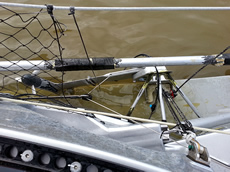 |
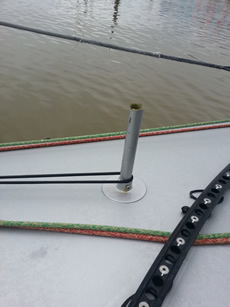 |
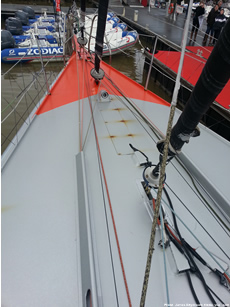 |
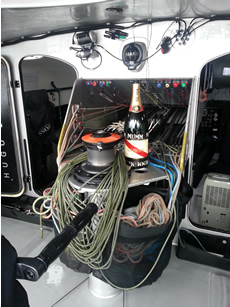 |
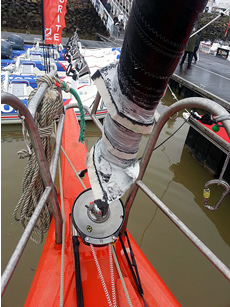 |
Given that the record for the Vendee Globe has plummeted from 84 to 78 days on this occasion, where does Thomson think the future lies? “It depends on what they do with the rule and whether IMOCA continues to be a development class or not. I really hope it does, and if so the speed will carry on going up and up and up for sure. I’m not sure the boats are a week faster than they used to be and the weather [this time] has certainly got something to do with it. I hope IMOCA continues to develop - the boats are fantastic and I think a lot of the reason skippers come here and sail on them is that they are just a pleasure. I still look at the speedo and you’re doing 20 knots in 20 knots of wind and it’s like ‘this is cool...’”
As to what lies ahead for Thomson, clearly at last finishing the Vendee Globe and also coming home third in an old generation boat will have done him no harm with his sponsor. Media-wise he did well to have a weekly spot on BBC Breakfast, viewed by 7 million people in the UK. However negotiations with Hugo Boss over what happens next are yet to be had. At the Havana bar last night, Till Pohlmann, Hugo Boss’ long suffering Head of Sports Sponsorship was making positive noises about continuing.
“We were in Germany with Hugo Boss last week and they were delighted,” says Stuart Hosford. “The Vendee Globe is funny. My granny, my mum, my uncles, the Hugo Boss board - once people get hooked on the Vendee Globe tracker on their phones they just get emotionally bought into it. It was great to walk around the Hugo Boss HQ and see them talking about it all the time.”
Both Hosford and Thomson say that in their next talks with Hugo Boss, they will be looking at ‘all their options’, ie not just the IMOCA class, although Thomson is keen to remain in offshore racing. Hosford believes that Hugo Boss will certainly be interested in Sir Keith Mill’s plans to drag IMOCA kicking and screaming into becoming more of a global class and less exclusively French.
The Alex Thomson Racing team is obviously geared up for doing the next Vendee Globe in 2016, but Thomson has yet to confirm his participation. “Competing in the Vendee Globe and being part of the team that aspires to be part of this race is all-consuming,” said Thomson. “You give up your life to be able to do it. There are some fantastic positives, but there are negatives as well. I couldn’t imagine doing anything else. I’m not sure about 2016, but I’m sure I will do the Vendee Globe again.”
Sir Keith Mills adds: “I suspect he’ll need a few weeks to get his thoughts together but I’d be very surprised if he isn’t back in four years time and this will have given him and his team huge confidence to go forwards.”
In the shorter term Thomson now gets to return to the UK and spend quality time with his wife Kate and this son Oscar as he gets himself back in shape. “I have lost quite a lot of weight [his legs are looking quite spindly]. You lose a bit of body fat and you lose a lot of muscle mass in the muscles you aren’t using. So I’ll get into some training and get fit again.”
Personally we are extremely pleased for and proud of Thomson, some 15 years on from our conversations about the Vendee Globe in the middle of the night on the rail of Ariel as we sailed from Havana to Panama in the Clipper Round the World Race.

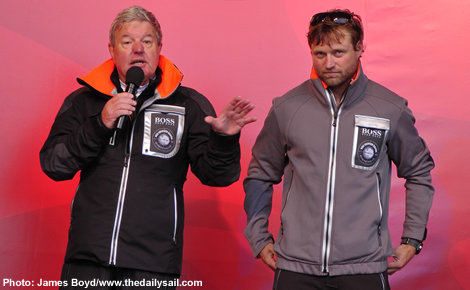
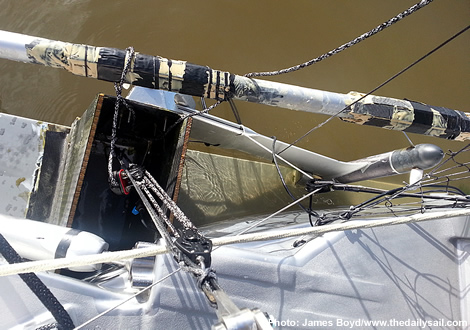
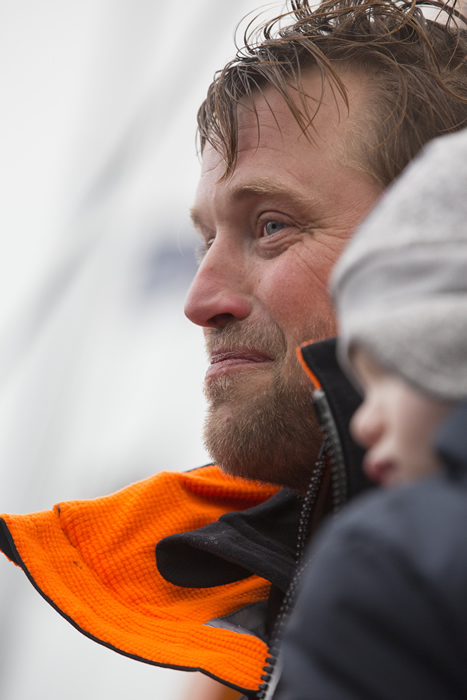
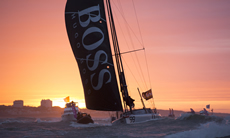
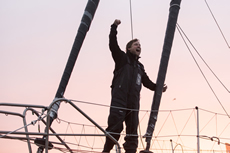
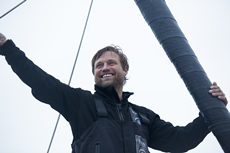
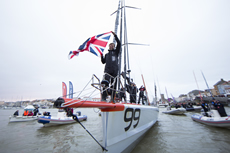
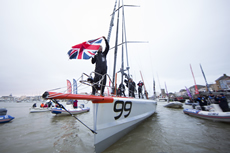
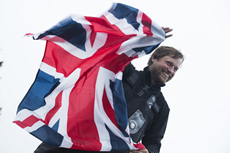
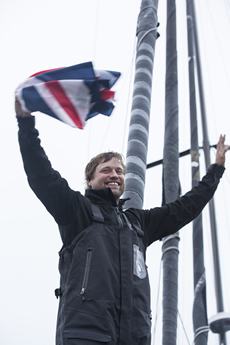
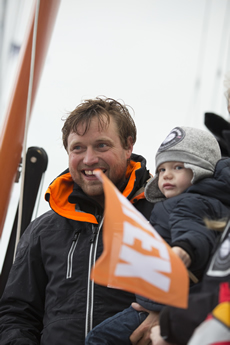
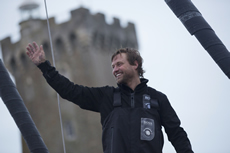
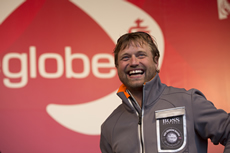
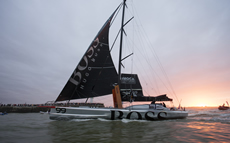
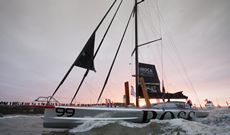
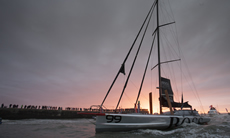
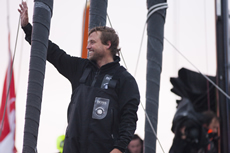








Latest Comments
Add a comment - Members log in